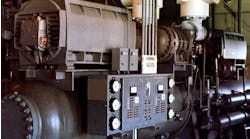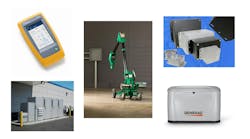EC&M Tech Talk Video — All About Variable-Frequency Drives
In this episode of “EC&M Tech Talk,” Randy Barnett, a journeyman electrician, electrical instructor, inspector, author, trainer, and electrical safety expert, first briefly discusses the background of electronic drives used to vary the speed of motors. He then shows viewers how the modern variable-frequency drive (VFD) operates, discusses functions and protections, and then reviews the NEC requirements for their installation.
Electronically controlled means to vary the speed of motors was first seen back in the 1950s. The first drives were used to control the speed of DC motors. The advantages of varying the speed of motors are important for all types of applications. Whether you're trying to control the speed of a portion of a manufacturing process, the pressure in a piping system, or the control of air through a ventilation system, the use of a variable-speed drive is hard to beat.
As drive technology began to evolve, it wasn’t long before the speed of the AC motor could be varied electronically. Today’s modern AC drives' input is 3-phase power, often 480VAC. The converter section of the drive rectifies the AC into DC voltage onto a DC bus. This bus then supplies the direct current to the inverter section. Drive programs and control then vary the AC output of the drive in the form of positive and negative pulses to vary the speed of the motor, thus the term “pulse-width modulation” (PWM). These PWM drives are most often referred to as variable-frequency drives (VFDs).
The VFD of today is typically a low maintenance item. Manufacturers’ instructions provide the specifics for routine maintenance and checks on these drives. Installation of this equipment is addressed in NEC Art. 430 on Motors, Motor Circuits, and Controllers; Part X Adjustable-Speed Drive Systems. When installing electronic drives, pay particular attention to the conductor sizing, disconnect, overload and bypass requirements for adjustable-speed drive systems.



